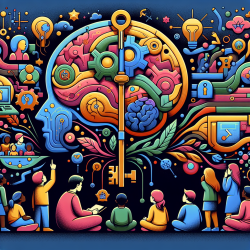Understanding ADHD in Boys and Girls: What Practitioners Need to Know
Attention-Deficit/Hyperactivity Disorder (ADHD) is a prevalent neuropsychiatric disorder in children, characterized by inattention, hyperactivity, and impulsivity. Interestingly, ADHD is diagnosed more frequently in boys than in girls, with a male-to-female ratio of 3:1 in population studies. However, recent research highlights significant gender differences in the presentation and co-existing symptoms of ADHD, which may contribute to the underdiagnosis in girls.
Gender Differences in ADHD
The study titled "ADHD in girls and boys – gender differences in co-existing symptoms and executive function measures" by Skogli et al. (2013) explores these differences in depth. It reveals that girls with ADHD often exhibit more internalizing symptoms, such as anxiety, compared to boys who display more externalizing behaviors like rule-breaking. This difference in symptom expression can lead to fewer referrals and diagnoses for girls.
Key Findings for Practitioners
The study utilized self-report scales and parent ratings to assess co-existing symptoms and executive function (EF) in boys and girls with ADHD. Here are some crucial takeaways for practitioners:
- Self-Reported Anxiety in Girls: The research found that self-reported anxiety was a significant distinguishing factor for ADHD in girls, with a 93% accuracy in classification. This highlights the importance of including self-report measures in assessments to capture internalizing symptoms that may not be evident through observation alone.
- Parent Ratings of Rule-Breaking in Boys: For boys, parent ratings of rule-breaking behaviors were crucial in distinguishing ADHD, with an 86% accuracy. This suggests that practitioners should pay close attention to parent reports of externalizing behaviors when assessing boys.
- Executive Function Measures: While neuropsychological EF tests showed moderate ability to categorize ADHD, parent ratings of EF skills were more effective, particularly in boys. This underscores the value of using comprehensive assessments that include both parent and self-report scales.
Implications for Practice
Practitioners working with children with ADHD should consider these gender differences in symptom presentation. Here are some strategies to improve assessment and intervention:
- Use a Multi-Method Approach: Combine self-reports, parent ratings, and teacher observations to get a comprehensive view of the child's symptoms.
- Focus on Internalizing Symptoms in Girls: Be vigilant for signs of anxiety and depression in girls, as these may be more pronounced than hyperactivity or impulsivity.
- Consider Externalizing Behaviors in Boys: Pay attention to behaviors like rule-breaking and aggression, which are more common in boys with ADHD.
Encouraging Further Research
While this study provides valuable insights, there is a need for further research to explore the nuances of ADHD in different genders. Practitioners are encouraged to stay updated with the latest findings and incorporate evidence-based practices in their work.
To read the original research paper, please follow this link: ADHD in girls and boys – gender differences in co-existing symptoms and executive function measures.










